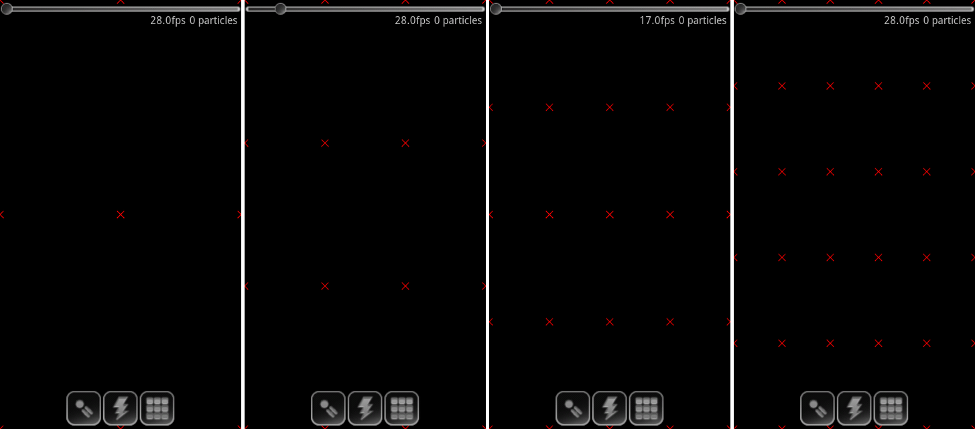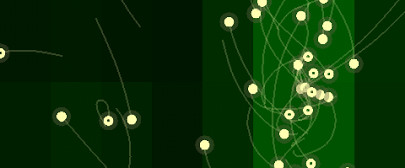03/2019 - This post is long outdated, as the design I’ve been using for years is responsive and there’s no need anymore for mobile-specific verisons
Finally the mobile version of this site is up and ready to go. It features most of the characteristics of the full site and also most of the functionality. Hope you find it useful when browsing from your handheld devices. Controls to switch forth and back between versions are provided. If you want, give it a try:

Particle Physics Simulator 3.1
The new version of the Particle Physics Simulator for Android, the version 3.1.2, has just been released to the Android Market. Among the several new features it contains, I’d like to single out the possibility to change the mesh density in the Particle-Mesh mode, and also the option to display the mesh points. Mesh density values range from 0 to 3, being 0 the less dense and 3 the denser. Increasing the mesh density means more mesh points scattered over the simulation area, where actual values of mass density are computed, which leads to a more accurate simulation with the drawback that it is also slower. Feel free to fiddle with the app, setting different mesh densities and observing how particles react to the new values. In the post image are the four mesh densities included in the simulator.

Particle-mesh in PPS 3.0
The new version 3.0 of the Particle Physics Simulator has been out for almost a month now, but I just had no time to write a post about it. I guess most of you already got the automatic update via the Android Market. The most notorious feature added is the incorporation of a new force calculator method which is selectable from the preferences screen. The force calculator method is the first of two steps in any simplified n-body code, where forces acting on each particle are calculated. Then, the integrator comes in to derive new accelerations, velocities and, ultimately, positions, which are conveniently updated and displayed in screen to create the illusion of a smooth animation.
In the basic direct method each particle’s force is calculated directly applying Newton’s second law of motion, where given initial positions \(q_i\) and velocities \(\dot q_i\) for the \(i\) particles, we can get the forces with:
Here are some videos of the various versions that have been released of the Particle Physics Simulator (formerly called N-Body Simulator) for Android.

Astronomy Cast
Today I want to talk a bit about an initiative that I’ve been following for quite a long time now and I think deserves some attention. I’m talking about Astronomy Cast. Astronomy Cast, in their own words, takes a fact-based journey through the cosmos as it offers listeners weekly discussions on astronomical topics ranging from planets to cosmology. Fraser Cane and Dr. Pamela Gay elaborate a high-quality podcast each week, where they discuss several astronomy, astrophysics, cosmology and particle physics topics. The span of their talks is just astounding, and they really have a gift for explaining complicated concepts in a very straightforward manner.
The new version of the Particle Physics Simulator for Android is now out in the Market. The main new feature is the addition of background images to the simulations. Here’s how they work:
First, go to Settings and scroll down to the Background Image entry. Then, click on it and select the image you desire from your gallery/external storage. And yup, that’s all!
The images are conveniently cropped and scaled so that OpenGL ES can handle them. OpenGL ES only accepts square textures whose side length is a power of two, so what the app does is basically calculate the largest square-of-two-sided area that fits in the selected image and then crops it.


